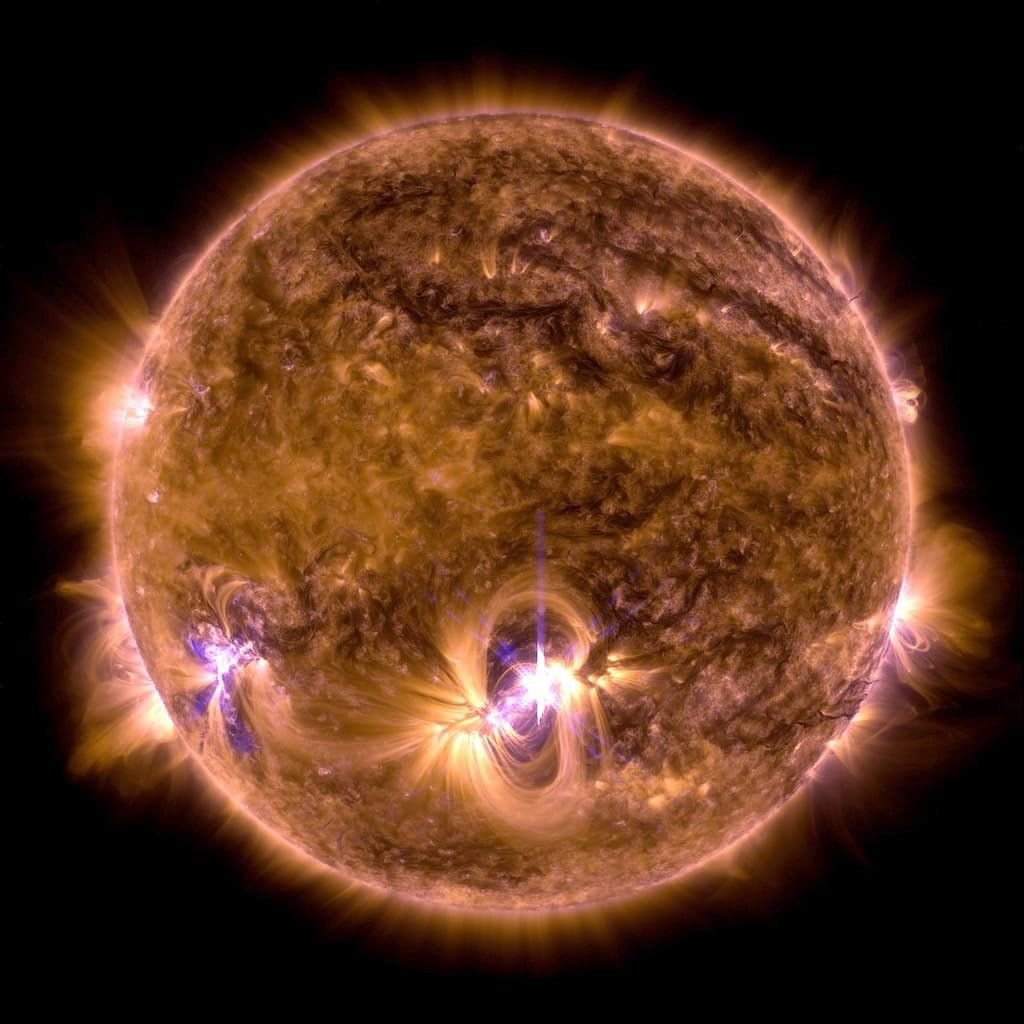
When a star is first born, most of its energy comes from the heat generated by the collapse of gas and dust into a dense core. Over millions of years, the temperature and pressure at the center of this young star rise so high that the nuclei of hydrogen atoms begin to fuse, forming helium. This process, known as nuclear fusion, releases tremendous amounts of energy.
That energy not only makes the star shine but also pushes outward, balancing the inward pull of gravity. With this balance achieved, the star enters the main sequence—the longest and most stable phase of its life.
Our own Sun, captured here in an image from NASA’s Solar Dynamics Observatory, is a classic example of a main-sequence star. It glows with a tannish-orange light, while powerful magnetic activity can unleash dramatic solar flares, as shown by the pinkish eruptions visible across its surface. The Sun is currently about halfway through its main-sequence lifetime.
During this phase, a star’s brightness, size, and temperature gradually evolve, but it remains relatively stable for millions—or even billions—of years. The pace of this life cycle depends largely on a star’s mass:
-
Low-mass stars burn their fuel slowly, glowing cooler and dimmer but lasting for trillions of years—far longer than the universe has even existed so far.
-
Massive stars, on the other hand, live fast and die young. They burn through their fuel at an extraordinary rate, often exhausting themselves in only a few million years.
In the grand tapestry of the cosmos, the main sequence is the stage where stars spend most of their lifetimes, steadily burning hydrogen, illuminating galaxies, and providing the light and warmth that make life possible on worlds like our own.
